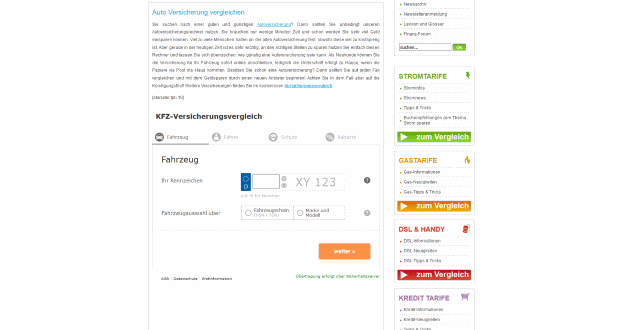Choosing the right warranty and service agreement
Selecting the appropriate warranty and service agreement can affect ownership costs, convenience, and the long-term value of a vehicle. This article explains what warranties cover, how service plans differ, and which factors to weigh when comparing options across providers and vehicle types.

Choosing the right warranty and service agreement means balancing protection, cost, and convenience. Warranties vary by coverage, duration, exclusions, and transferability; service agreements and prepaid maintenance handle routine upkeep differently from repair-focused protection plans. Understanding typical inclusions, how claims are processed, and how coverage interacts with financing or leasing terms helps vehicle owners avoid unexpected expenses and preserve resale value.
What does a warranty cover?
Warranties typically cover defects in materials and workmanship for specified components such as the engine, transmission, and drivetrain. Manufacturer warranties tend to be clearer about covered items and claim processes; extended and third-party warranties can vary widely and often exclude wear-and-tear items like brake pads, tires, and routine maintenance. Read the contract to see limits, deductibles, and whether authorized dealers must perform repairs.
How to assess routine maintenance needs
Service agreements or prepaid maintenance plans focus on scheduled items: oil changes, filter replacements, inspections, and some consumables. These plans make budgeting easier and can be convenient if you keep the vehicle for the plan duration. Compare what visits and services are included, whether parts and labor are covered, and if service must occur at a specific dealer or can be completed at independent shops.
Financing, leasing and their impact on coverage
Financing and leasing affect which agreements make sense. Lease agreements often require you to maintain the vehicle per manufacturer schedules and may include manufacturer warranty coverage for the lease term. When financing, consider whether the lender or GAP coverage requires specific protections. Extended warranties purchased through a lender or dealer may be rolled into loan payments, increasing financed amounts and affecting interest paid over time.
Insurance, registration and administrative factors
Warranties do not replace insurance or registration responsibilities. Collision and comprehensive insurance handle accident and non-mechanical losses, while warranties focus on mechanical failures. Some insurers or state registration processes may require proof of certain coverages or disclosures. Also check whether coverage transfers to a new owner, as transferable warranties can improve resale appeal.
Telematics, emissions and fuel or charging considerations
Modern vehicles use telematics for diagnostics and connected warranty claims; some warranties require OEM telematics data for eligibility. Emissions systems and batteries in electrified vehicles have specific coverage rules—battery degradation, range loss, and charging equipment may fall under separate terms. For hybrid and electric vehicles, know how battery capacity warranties interact with general vehicle warranties and how fuel or charging behavior can influence wear.
Cost insights and real-world comparisons Real-world costs vary by vehicle, coverage level, and provider. Manufacturer warranties are often included with new vehicles but extended coverage or third-party plans can range from a few hundred to several thousand dollars depending on term and deductible. Prepaid maintenance and roadside assistance add predictable expenses but differ in scope. Below is a concise comparison of common options and providers.
| Product/Service | Provider | Cost Estimation |
|---|---|---|
| Manufacturer Extended Warranty | Toyota, Honda, Ford (OEM plans) | $0–$3,000 total for extensions, often available as financed add-ons |
| Third-Party Extended Warranty | Endurance, CarShield, Carchex | $500–$3,500+ depending on coverage, term, and vehicle age |
| Dealer Prepaid Maintenance | Local dealer networks | $200–$1,200 for multi-year packages covering scheduled services |
| Certified Pre-Owned Warranty | BMW, Mercedes, Lexus (CPO) | Often included with CPO purchase; estimated value $0–$1,500 depending on vehicle |
| Roadside Assistance / Add-on | AAA, insurer add-ons | $50–$150/year or $3–$20/month for plan add-ons |
Prices, rates, or cost estimates mentioned in this article are based on the latest available information but may change over time. Independent research is advised before making financial decisions.
When comparing costs, factor in deductibles, exclusions, claim process speed, repair facility requirements, and whether coverage is cancellable or transferable. Cheaper plans can have more exclusions; manufacturer or certified pre-owned coverage may offer stronger resale benefits.
How depreciation and resale value interact with coverage
Warranties and service records can help retain resale value by demonstrating care and reducing buyer risk. However, paying heavily for extended coverage late in ownership may not yield a proportional resale benefit. Consider vehicle age, expected ownership duration, and typical repair costs for that make and model when deciding whether to invest in extended warranties or prepaid maintenance.
Choosing the right option depends on vehicle type, driving habits, access to trusted repair facilities, and personal risk tolerance. Compare contract language carefully, verify provider reputations and claim processes, and weigh out-of-pocket risk against the price of coverage. A clear reading of exclusions and an understanding of how coverage interacts with financing, leasing, insurance, and emissions-related protections will lead to a more informed decision.





